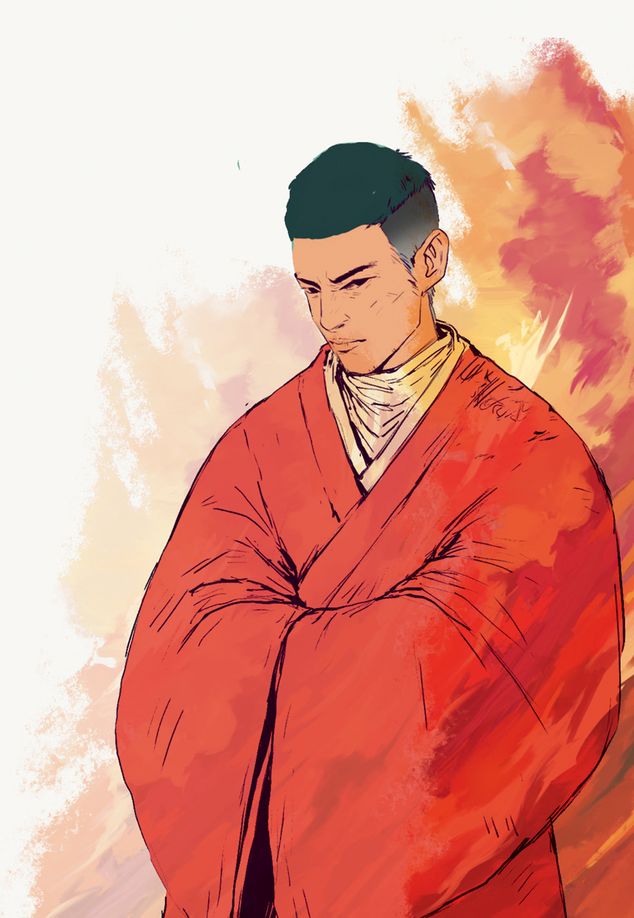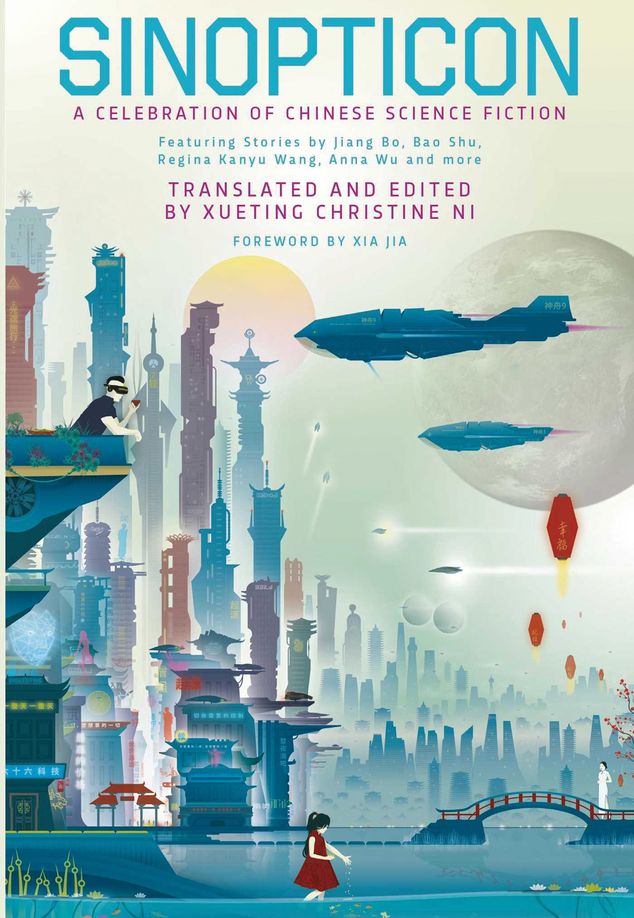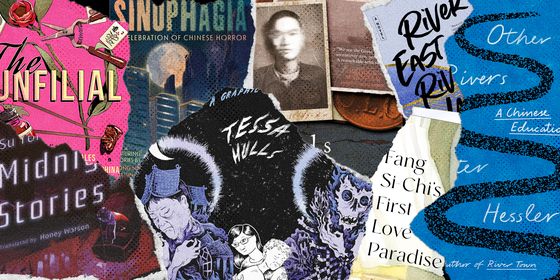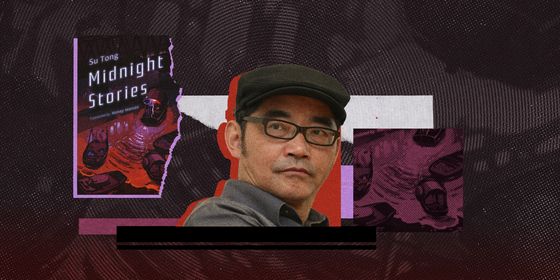Wu Zetian defeats giant robot (and the patriarchy) in new novel
To paraphrase its author Xiran Jay Zhao, Iron Widow is a young adult version of Pacific Rim meeting The Handmaid’s Tale in a retelling of the rise of Wu Zetian, featuring giant robots inspired by East Asian mythology and controlled using a sexist boy-girl piloting paradigm.
These robot (known to the wider science fiction world as “mechas”) are deployed along a Great Wall as the last line of defense protecting a vulgar consumerist society from “hunduns,” enemy mechas inspired by the headless beasts of Chinese mythology. There is a toxic fanboy culture that worships the boy pilots of these missions as media celebrities (considered has-beens at the age of 24), while offering up girls as disposable and interchangeable concubine co-pilots. There’s also a “boy’s love” subplot that evolves into a polyamorous relationship involving the main characters, a patriarchal and remote “Council of Sages” led by Chairman Kong (as in Confucius) ruling the realm, and, by the way, one of the villains is named An Lushan.
You either read that synopsis and are currently dropping everything to immediately buy Zhao’s new book, or you read it through three times, had no earthly idea what it meant, and have already turned the page to read about honey production trends in Guangxi.
In an interview, Zhao, who prefers the third-person pronoun “they,” once compared their tastes to that of “a 7-year-old Japanese boy and a 62-year-old Chinese auntie.” Born in China and now based in Vancouver, Canada, the cultural critic and YouTuber is unabashed in celebrating the syncretic influences on their debut novel—from anime to online fiction to Chinese historical romance telenovelas. It’s a heady mix that works most of the time.
Wu Zetian is a young woman born in a mountain village, seeking to avenge the death of her sister, who is killed in the opening scene while co-piloting a Chrysalis, the mechas defending the realm, Huaxia. Zetian becomes a concubine-pilot and discovers not only her untapped talents, but a secret which could undermine the military, political, and social order of her world.
Loosely based on the seventh century’s Wu Zetian (武则天), the only female emperor in Chinese history, Zhao’s character retains fragments of the real Wu’s back story. This protagonist-narrator’s name also strongly hints at the ambitions of the character, presumably to be revealed in later sequels. Zetian’s male co-pilot is a strong and troubled young man named Li Shimin, and their squad is led by the wise Zhuge Liang and the slightly less noble Sima Yi, all named after real people cherry-picked from different periods of China’s imperial past.
Readers familiar with Chinese history will have fun with all of these easter eggs, although Zhao takes pains in their foreword to note that while this fictional world has elements drawn from history and mythology, it is not meant to be a past, present, or future China.
Indeed, while many characters–like Zetian–share some attributes with their historical analogs (and perhaps a few more similarities to their portrayals in Chinese television and movies), there are few perfect parallels. Several historical eras are mashed into one timeline, and the character arcs radically depart from that of their real-world namesakes. In other words, reading Zhao’s novel and expecting a work of Chinese history would be a little like watching Thor: Ragnarok and anticipating a documentary about medieval Scandinavia.
Nevertheless, Zhao excels at world-building. The historical references are well-executed and clever. The use of Chinese cosmology as a rationale for the physical properties of the novel’s setting, such as qi and “Five Elements” theory to explain the powers of the mechas and their pilots, is a nice change from repetitive Western sci-fi tropes. There are also some sly references to problems in today’s China.
Zhao’s novel actively engages with a conversation on gender norms and sexuality that has been ongoing in the science fiction and fantasy genre, particularly online, in recent years. It also touches on issues of ethnicity and ethnic identity by giving several characters (historically accurate) non-Han backgrounds. The conclusion teases at a larger mystery centered on the very notion of which of the groups divided by the Great Wall are the real invaders, and which are the defenders. This is a mystery likely to be answered by the next book, in what Zhao clearly intends to be a series.
Iron Widow may not be for everyone. It helps to have some of the same interests in anime and young adult fiction as the author. There are sections where the dialogue and the character development come across as a little staid and clunky, a problem that often afflicts books with adult themes intended for the young adult market.
Zhao’s imagination carries the book with their inspired reinventions of historical and literary figures from mischievous Monkey King Sun Wukong and lascivious adulteress Pan Jinlian, to founder of the Ming dynasty Zhu Yuanzhang (朱元璋) and China’s First Emperor Qin Shi Huang (秦始皇). Readers with a love for Chinese culture, history, anime, mechas, romance, adventure, young people with qi-based superpowers, sharp critiques of the patriarchy, breaking down calcified notions of gender/sexuality in YA science fiction fantasy, or any combination thereof, will find something to enjoy about Iron Widow.
Three More Recommended Books
The Amur River: Between Russia and China
British travel writer Colin Thubron has a track record of documenting Russia, China, and Central Asia that goes back to 1987. Close to 80, Thubron withstands injury and arrest as he travels by rail, boat, and on horseback along the 1,000-mile stretch of the Amur River dividing Russia and China. Conversant in both Russian and Chinese, Thubron deftly draws out the fears, hopes, and problems of all the people he meets along the frontier, while bringing this singular borderland to life with his signature poetic prose and nuanced big-picture insights.
Sinopticon
Ever since Liu Cixin’s Three Body Problem, there has been growing Western demand for Chinese science fiction. Sinopticon offers a sampling of the best-known writers in Chinese sci-fi from the late-20th century to today. Thirteen short stories, all translated into English for the first time, take the reader through a panoply of worlds and genres, from a library floating for eternity through space to the sweaty overcrowded life of a worker on Mars. The work has been carefully curated and translated by Xueting Christine Ni, who includes detailed explanations of significant Chinese cultural elements that might have easily become lost in translation.
Burying the Mountain
An innovative debut from Shangyang Fang, a fresh-faced 26-year-old who styles himself an “outcast” in the Chinese poetry world, this poetry collection is based on longing and loss. It blends the structure of Bach’s fugues and Proust’s nostalgic meditation with the musicality of classical Chinese and imagery from Fang’s childhood home in Chengdu. Fang, a Stegner Fellow at Stanford University’s creative writing program, makes bold experimentation in a few pieces, attempting to harmonize Chinese and English. Readers fluent in Chinese and English, caught between both literary worlds, may find pleasure in this special work. – Alex Colville
Myth and Mechas: “Iron Widow” Sees Historical Figures Piloting Robots | Book Review is a story from our issue, “Access Wanted.” To read the entire issue, become a subscriber and receive the full magazine.
















